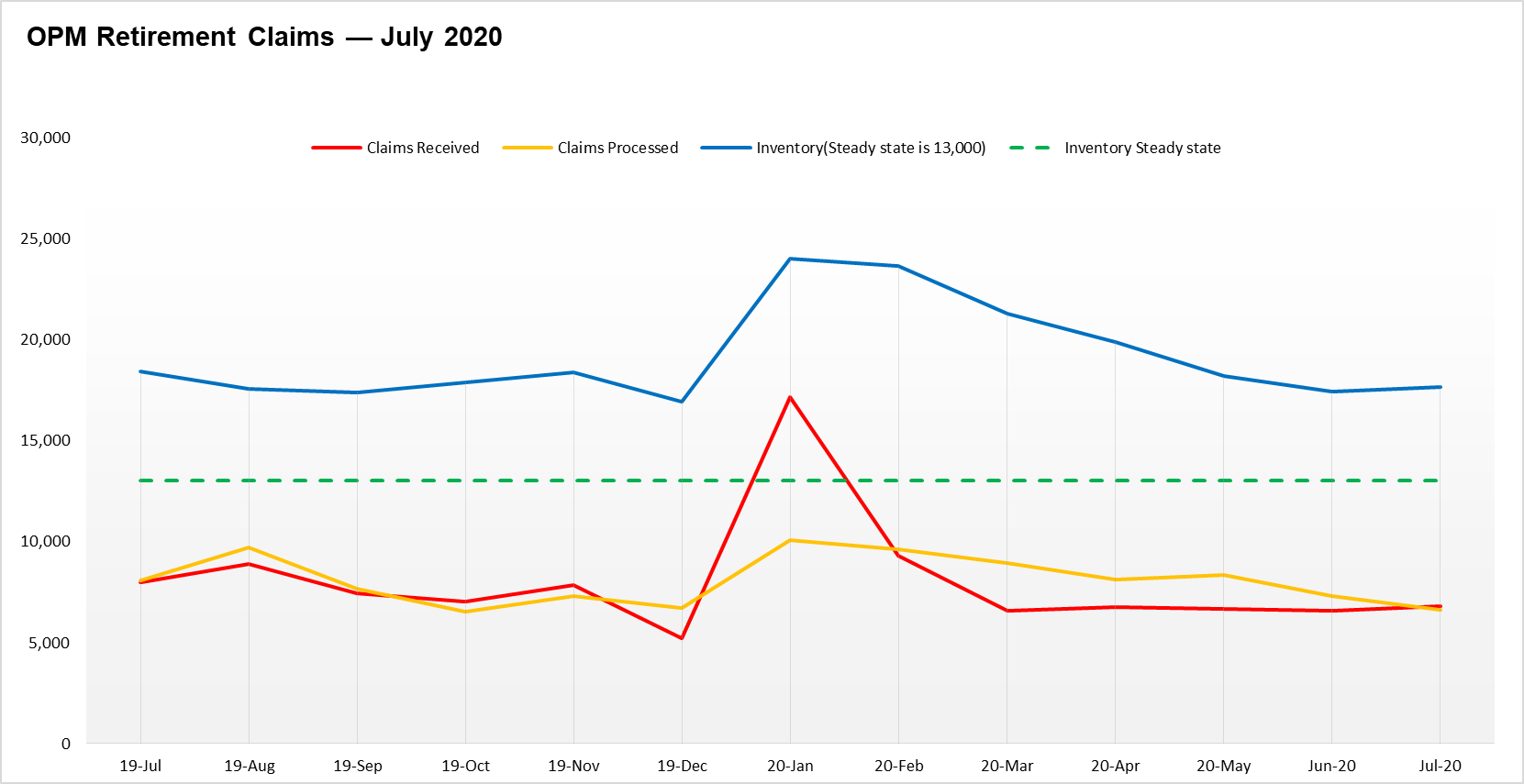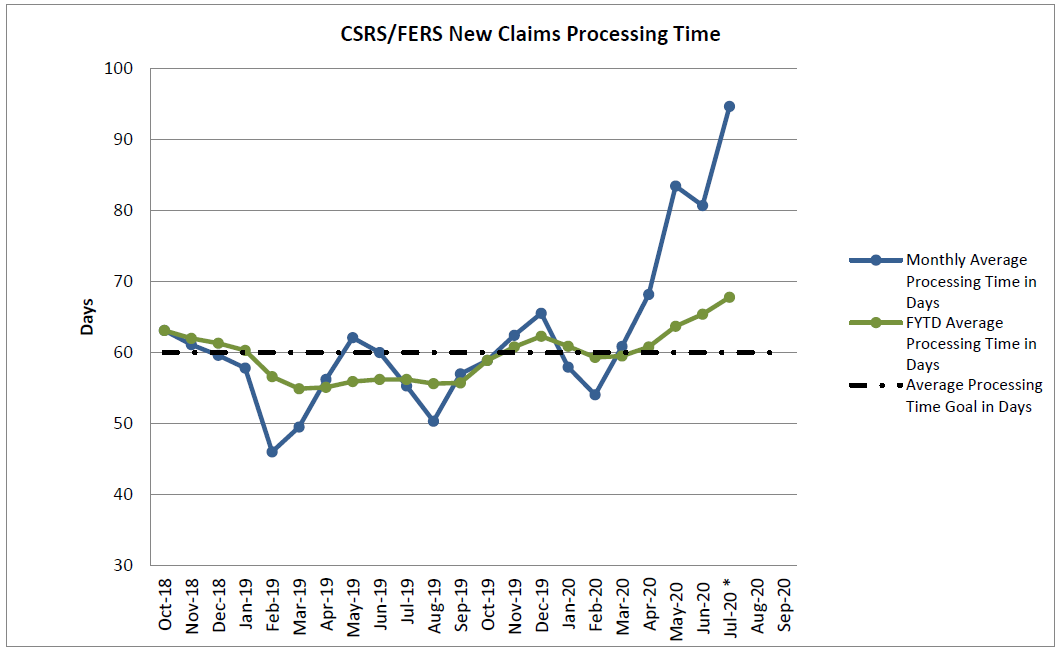

After six months of progress on its backlog of retirement claims, the Office of Personnel Management backslid for the first time this year in July.
After six months of progress on its backlog of retirement claims, the Office of Personnel Management backslid for the first time this year in July. The agency received slightly more retirement claims than it did the previous month, but processed fewer. One reason for that seems to be that processing claims took two weeks longer on average.
OPM received 6,819 retirement claims in July, about 260 more than in June. Yet it processed only 6,620, almost 700 fewer than the previous month. That caused the backlog to inch further away from OPM’s self-described steady state of 13,000, coming in at 17,631 backlogged retirement claims.

One reason for this seems to be that OPM took longer processing these claims. The average processing time in days jumped by two weeks, from 81 days to 95 between June and July. This is the second such uptick in three months; it rose from 68 days to 83 between April and May. OPM’s goal is to process such claims within an average of 60 days.

A disclaimer from OPM states, “Initial retirement cases produced in less than 60 days, on average took 43 days to complete; whereas cases that were produced in more than 60 days, on average, took 159 days to complete.”
That disclaimer has accompanied this data for three months now. The amount of time for cases produced in less than 60 days has remained relatively steady: 42 days in May, 41 in June, and 43 in July. However, the number of days required in cases that took more than 60 has gone up significantly: 125 days in May, 142 in June, and 159 in July.
Copyright © 2024 Federal News Network. All rights reserved. This website is not intended for users located within the European Economic Area.
Daisy Thornton is Federal News Network’s digital managing editor. In addition to her editing responsibilities, she covers federal management, workforce and technology issues. She is also the commentary editor; email her your letters to the editor and pitches for contributed bylines.
Follow @dthorntonWFED


